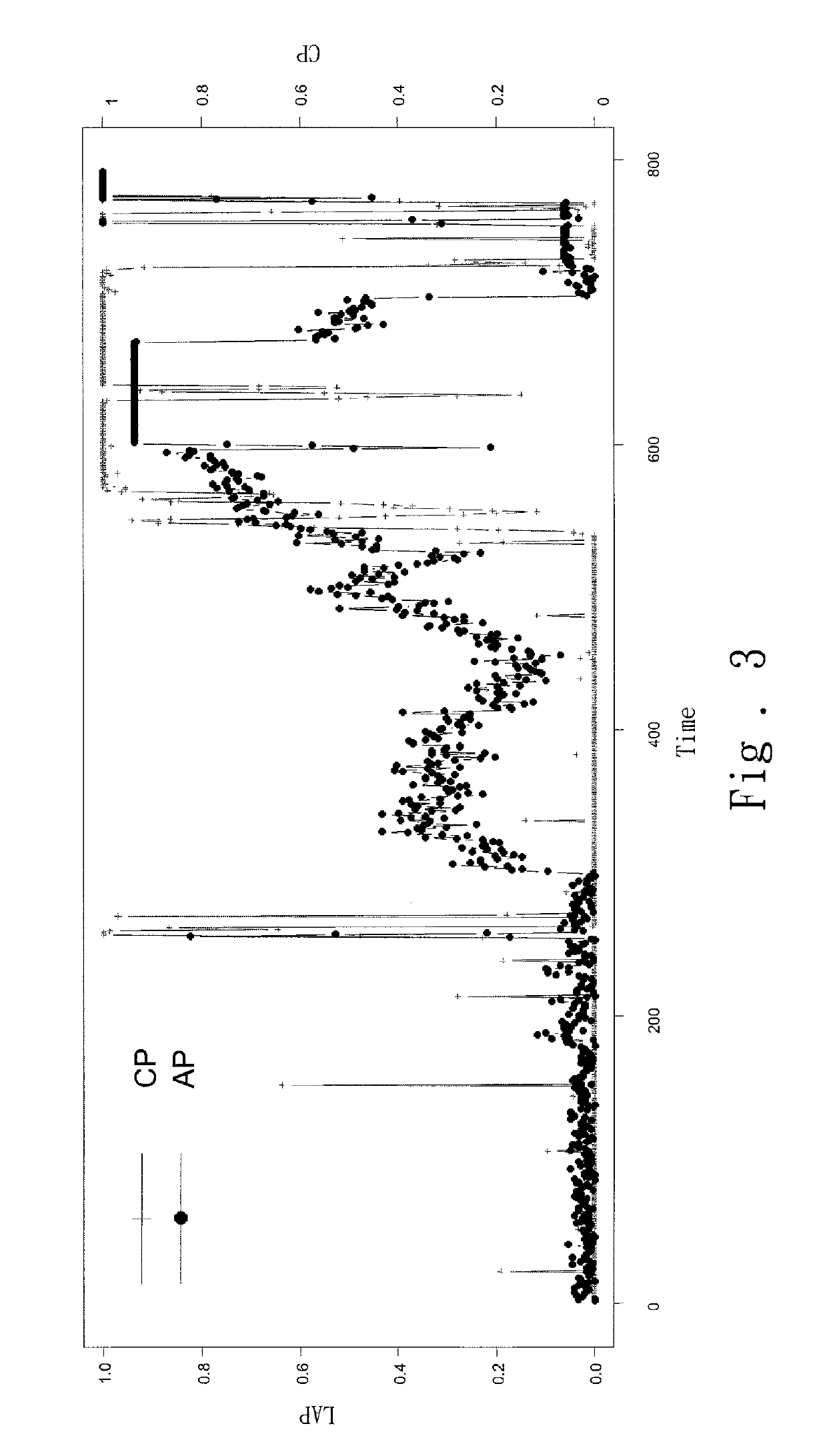Method for selecting leading associated parameter and method for combining critical parameter and leading associated parameter for equipment prognostics and health management
- Summary
- Abstract
- Description
- Claims
- Application Information
AI Technical Summary
Benefits of technology
Problems solved by technology
Method used
Image
Examples
Embodiment Construction
[0019]Details and technical contents of the present invention are given with the accompanying drawings below.
[0020]Referring to FIG. 1, according to an embodiment of the present invention, a method for selecting a leading associated parameter includes steps (S11) to (S14) below. The leading associated parameter is associated with an operation output from an operating system, a hardware device or a machine.
[0021]Along with the development of the Internet of Things (IoT), most new-model devices including an operating system, a hardware device or a machine are capable of executing a real-time data outputting function through a sensor provided therein. Accordingly, a large amount of sensor data is collected, and may be stored in, e.g., a memory including a database.
[0022]Thus, in step (S11), data pre-processing may be performed, by a processor, on the sensor data stored in the database. That is, in the sensor data, incorrect data is removed and missing data is filled, and data frequenci...
PUM
 Login to View More
Login to View More Abstract
Description
Claims
Application Information
 Login to View More
Login to View More - R&D
- Intellectual Property
- Life Sciences
- Materials
- Tech Scout
- Unparalleled Data Quality
- Higher Quality Content
- 60% Fewer Hallucinations
Browse by: Latest US Patents, China's latest patents, Technical Efficacy Thesaurus, Application Domain, Technology Topic, Popular Technical Reports.
© 2025 PatSnap. All rights reserved.Legal|Privacy policy|Modern Slavery Act Transparency Statement|Sitemap|About US| Contact US: help@patsnap.com



